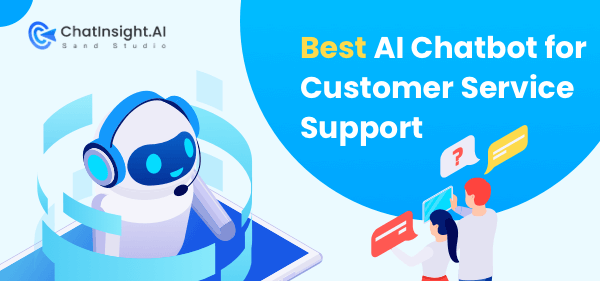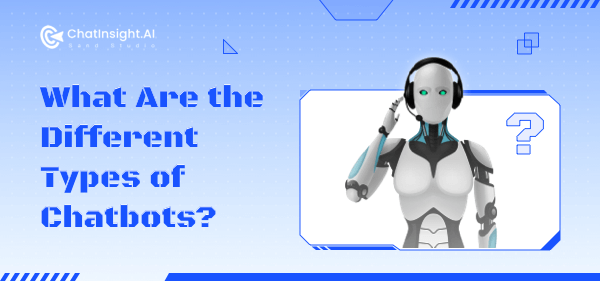Conversational Marketing: Definition, Benefits, Examples
There are dated, traditional, and modern ways for the products and services to reach the customers. However, the type of marketing the brands use factors in many elements. One of the parameters is identifying the target demographic.
Moreover, the brands need to make sure the marketing strategies are successful to captivate the audience. Most commercial entities are now using conversational marketing, which is a combination of different marketing mediums. High-tech conversational marketing is powerful and effective. Here is everything you need to know.
1What is Conversational Marketing?
Conversational marketing is an updated form of marketing that is based on dialogues between the customers and the brand. It promotes two-way communication in real time. Conversational marketing means engaging with visitors and converting them into leads for sales. At the same time, it focuses on retaining existing customers.
Conversational marketing means quick responses and an efficient customer journey through the sales funnel. The phrase was first used by Drift, which is a marketing and sales entity. Drift revolutionized the way companies used to communicate with their customers. Conversational marketing means the teams can talk to website visitors and lead them to the FAQ section without wasting time. Customers are pleased with the authentic first-hand information. Brands are happy with the increased market share and loyalty.
2Why is conversational Marketing Important?
When incorporating conversational marketing in the company, brands can use it in addition to traditional methods for lead generation. It leads to an efficient marketing funnel. Furthermore, it removes one-sided conversations. Conversational AI chatbots talk to customers based on their likes, styles, and preferences.
Customers prefer to talk to a brand through many channels. Therefore, it is up to them to pick the medium. Conversational marketing improves results because of its seamless integration. Compared to previous methods, AI chatbots are focused on a grander scale than confirming sales. They can be used on a website or as a support portal to retrieve answers quickly. Conversational marketing reduces the burden on the sales team while offering valuable insight. It results in meaningful talk that positively influences the brand, its sales, and its revenue.
3The Benefits of Conversational Marketing
Conversational marketing refers to a personalized and real-time approach to engaging with customers and prospects through dialogue-driven interactions. This strategy leverages various communication channels, such as live chat, chatbots, messaging apps, and other conversational interfaces. Here are several benefits associated with conversational marketing:
1. Better brand awareness
When a brand interacts with the customers through messages or other modern means, they are able to create a lasting impression on the buyers. The company can educate the stakeholders about their products and services. In addition, they can create an anticipation for the upcoming items. These strategies result in brand awareness.
When the customers are familiar with the brand, they are likelier to shop from the online shop with trust. Their previous experiences have made them comfortable with the brand. The customers know its core value, refund processes, and shipment. Furthermore, they have already subscribed to their online services for updates.
2. Better customer experience
When customers shop for an item or a service, the interaction leaves a lasting impression. Conversational marketing motivates the company to interact with customers through FAQ pages or callbacks to improve engagement. When the customers interact with the brand through AI chatbots or video calls, their experience is enhanced.
Furthermore, the brand can also communicate with the customers through emails after the sale cycle is complicated. Brands opt for repetitive follow-up emails to get insight into customers’ minds. Unfortunately, emails are slow and mostly overlooked by the overs. Conversions are real-time and more reliable. The information is recent, which helps the brands significantly.
3. Higher engagement level
In plain terms, interacting with customers increases the probability of what they will purchase from the brand. Even if a customer subscribes to the newsletter or submits a form, the brand’s engagement rate increases. The concept of using tools in conversational marketing allows the brands to break traditional market barriers.
An AI chat will not make anyone wait for conversational marketing. The customers are not idly waiting for a callback to know their request has been processed. The chatbots will directly forward the call to the relevant sales team member. As a result, the experience and conversions are maximized.
4. Increased customer loyalty
Chatbots and live video calls increase customer experience as well as customer loyalty. They are valuable features that allow the brands to solve customer’s problems. Moreover, the company will allocate resources to resolve repetitive issues. As a result, a seamless customer experience is established.
Customer loyalty is a huge factor that determines the frequency of referrals. When the complex elements are resolved, buyers will talk about the brand to their friends and family. They will speak of the easy experience ins shopping, purchases, return, and refund. At the same time, the brand will mold its conversational marketing according to the buyer’s preferences.
5. Increased sales conversions
Conversational marketing is based on providing the customers with powerful information about the product. A person will not buy from the brand if they are miseducated or misinformed. Sales conversions are possible when the customers have the right data so they can make an informed decision.
When they have the relevant information such as price, materials, and ingredient details, the probability of sales return is significantly reduced. Sales conversion rates are easily influenced by mismanagement from the brand. Therefore, it is essential to give them the necessary data so the brand generates goodwill through sales.
4The Key Elements of Conversational Marketing
Conversational marketing is an approach that emphasizes real-time, one-to-one connections between marketers and customers. It leverages various communication channels to engage and nurture leads, ultimately driving conversions. Here are the key elements of conversational marketing:
1. Understand the Audience
The primary requirement for excellent conversational marketing is identifying the target audience. It is a fundamental strategy. Therefore, the brand must know where its target audience is and how much it knows of the crucial stakeholders.
Understanding the audience means knowing where the customers are spending their money. Secondly, it requires identifying their preferred way of communication. Many customers feel more comfortable using social AI chatbots rather than on websites. You can embed AI chatbots using other relevant methods. In addition, you can also identify if the customers are using chatbots on phones or computers.
2. Choose the right channels.
Picking the right channel is very important in conversational marketing. If you want to see the best results, you can embed AI chatbots in the website, messaging application, or social media. Below are some suggestions
- You can automate the Facebook live chats with bots
- Secondly, you can add a live chat widget on the website
- You can integrate an Instagram chatbot into the profile
- A WhatsApp business chatbot increases engagement as well.
However, remember, not all channels work in the same manner. For example, you cannot make product recommendations using a support AI chatbot. The latter is appropriate for customer support and the FAQ section.
3. Personalize and optimize
Conversational marketing requires the customers to pick the conversations. Otherwise, the strategies are not successful. Therefore, the brands have to let the customers pick the dialogues according to their desires and needs. When the buyers supervise the pace, they feel more controlled. They are not pressured in any way.
It is human nature to feel pressure. When the customers perceive they are navigating the circumstances, the probability of a product or service increases manifolds. The customers will purchase frequently from the brand because the conversations are very familiar. Therefore, let the customers choose the pace, whereas the brands can optimize the conversation.
4. Collect and analyze feedback.
Customer feedback is essential in conversational marketing because it attracts new buyers. Some customers do not leave feedback. However, they will engage as long as they have the right motivation and encouragement. The feedback requires a customized interaction that is not possible with email or mail. If dated means are adapted, the feedback is delayed.
Modern means, such as AI chatbots, ensure that customers leave feedback. Even unhelpful and negative remarks can help the brand attract new buyers. However, an imbalance of negative with positive feedback is never good because it discourages sales.
5. Training and development
Using AI chatbots in marketing and customer responses means the buyers do not get tired. However, as technologies advance, it means the brands must learn new tricks to deliver an excellent experience. A wise suggestion is to prevent angry customers from interacting with AI bots.
The brands are encountered to train their employees with common scenarios that are not solvable by bots. It will remove misconceptions and educate the service agents perfectly. In addition, the company can set up notifications for unsatisfied customers who wish to talk to a human representative rather than an AI chatbot.
Compliance and Privacy
Customer relationship technology has improved a lot over time. As a result, managing previous and present conversations with the brand has become very easy. For example, the customer's frustration is justified if they are repeating conversations. However, AI chatbots store previous information, so the newer chat begins where they left off.
Modern technology records conversation and collect the necessary information. As a result, repetition is avoided. The technology in conversational marketing has changed the dynamic of customer retention. However, the brands must ensure the information collected is not leaked or shared unlawfully. If compliance is not ensured, buyers lose trust, and sales drop tremendously.
5The Examples of Conversational Marketing
Conversational marketing aims to engage potential customers in personalized and interactive conversations to guide them through the sales funnel. Here are some examples of conversational marketing:
1. Sephora
Sephora is a well-known outlet from around the world that sells make-up products and skincare items. However, it is also popular for successful marketing strategies. It is one of the best Conversational marketing examples where technology has allowed the customers to connect with the brand.
Sephora has an appointment service where the customers can book services with Facebook Messenger. Furthermore, they can postpone or revise the appointments as well. The AI chatbot is mobile-friendly and super smart. It responds quickly, which the maker-lovers appreciate. You can also ask the bot about make-up item prices, make-up charges, and upcoming sales.
2. Dominos
Dominos is one of the most powerful Conversational marketing examples in the food industry. Nowadays, imagining ordering a pizza through an application is a reality. You can place a food order with Twitter, Facebook, and Slack on all Domino outlets.
The AI chatbot is quite creative with exemplary customer service that makes conversational marketing successful. The customers can tweet an emoji and receive a delicious pizza in the given time. The reason Dominos is successful in conversational marketing is because of extreme customization that has brought buyers closer to the food outlet. They love the easy processes that fill their tummy with delicious food.
3. Yilopiston Apteekki
Have you heard of Yilopiston Apteekki? It is called the Universal Pharmacy and has used conversational marketing to expand its operations. They have incorporated AI chatbots in customer service with a personalized medical advice team. The brand ten times in terms of digital sales.
The marketing strategy is successful on the company’s website. It welcomes more traffic. In addition, the AI chatbot offers customers promotions and other discounts during the conversation. The strategy has improved sales and the brand image. Conversational marketing ensures that customers feel cared for and helps them along the sales funnel.
4. DNA
DNA is a telecom service provider that introduced AI chatbots to reap the advantages of conversational marketing. The bot is quickly launched after the user presses it. It launched live communication and has been successful thus far. It has reduced the change of repetitive conversations.
DNA chatbots also offer promotional information such as discounted service plans, internet usage, and surcharges. You can use the DNA chatbot to get a new number very easily. As a result, the buyers are not traveling to the nearest outlet. It was DNA’s initiative to limit unnecessary traffic for sustainability and reduce carbon footprint.
6Create Your Own Conversational AI Chatbot
Conversational marketing is a powerful strategy to increase engagement. Moreover, it grows revenue while reducing costs. The AI chatbots used in the mediums can be expanded and more efficient. The brands can tailor them according to their needs and expectations. If you are interested in gaining these benefits, then let us present ChatInsight.
ChatInsight is an AI-powered question-and-answer tool that uses the Large Language Model. The bot offers accurate results and is available in multiple languages. Chatbot’s consultation service is available day and night. You can customize it to answer industry-specific questions. Embed it into your band website today to offer excellent consultation and customer support services.







Leave a Reply.